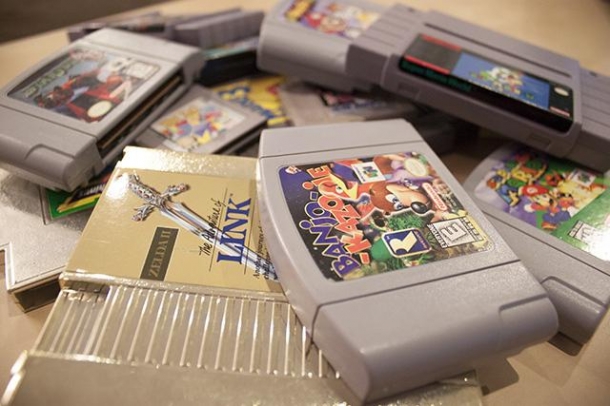The years leading up to the Nintendo 64's launch were a worrisome period for Nintendo. After dominating the console market for years with the Famicom and NES, the company began seeing more viable competitors during the 90's. The more advanced PC-Engine from NEC and Genesis from Sega were available by 1987 and 1988 respectively, years before the Super Nintendo Enertainment System. Then by the mid-90's, a number of new competitors sprung up for the SNES, using more advanced CD-ROM technology and processors capable of advanced polygonal graphics. These included the 3DO, Atari Jaguar, Sega Saturn, and Sony PlayStation, which were released from 1993 to 1994. Though the SNES was ultimately a success, this tougher competition hurt its sales, particularly in North America.
Nintendo thus began development of their next console fairly quickly, announcing its existence by AZugust 1993. The plan was for Nintendo to work with Silicon Graphics, a leader in 3D Graphic technology, to create "Project Reality," which would be available by the end of 1995 for under $250. This collaboration was likely due to Nintendo's limited experience with 3D graphics, as was the case with most game developers at the time.
The console, renamed "Ultra 64," was first shown to the public in Spring 1994. Though details were scarce other than its 64-bit CPU, it was confirmed that the console would use cartrdiges as opposed to the increasingly common CD-ROM format. The Nintendo 64's Game Paks were only a modest improvemnt over the SNES's equivalent's offering only up to 64 MB of storage space compared to the 700 MB offered by the CD-ROM. Nintendo argued that the far shorter load times offered by cartridges was the deciding factor.
In May 1995, the console's launch was delayed from Q4 1995 to mid-1996. By this time, the competing Sega Saturn and Sony PlayStation were already on sale, giving the N64 a late start. However, a mid-1996 release was chosen both to lower the launch price of the hardware and to avoid competing with other consoles during the holiday season. A Silicon Graphics employee claimed that hardware problems were also to blame. This delay might also have been meant to give some of the latter high profile SNES games, such as Yoshi's Island, Super Mario RPG, and Kirby Super Star less competition from more technically advanced N64 games.
The Nintendo 64's final reveal took place in November 1995, when it was given its final name. Unlike its predecessors, the Nintendo 64 would have the same name regardless of region. A peripheral for reading optical discs, later named the 64DD, was also announced for release within a year of the console, but would be repeatedly delayed until late 1999, and was never released outside of Japan.
One of the most striking features of the Nintendo 64 was its unconventional controller. Whereas the SNES controller was largely an evolved version of the NES controller, and was effectively adopted by other consoles such as the PlayStation, the N64 used a trident-shaped controller. On its surface with three prongs, it included six face buttons, three shoulder buttons, a traditional Directional Pad, a Start button, and an analog stick. The analog in particular was meant to control characters in 3D environments, featuring far more degrees of input than older control schemes.

